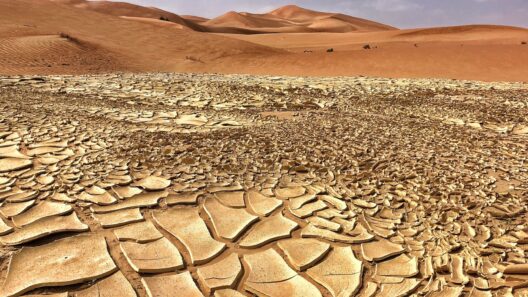Mexico, a nation replete with diverse geographical features, exhibits an equally multifaceted climate. From sun-kissed beaches along the shimmering coastlines to rugged mountains braving the heavens, and the arid expanses of deserts, the climate in Mexico is as varied as its topography. This complexity fuels interest among environmental enthusiasts and casual observers alike, enticing them to delve deeper into the atmospheric conditions that shape life across this dynamic country.
The coastal regions of Mexico are characterized by a predominantly tropical climate, marked by warm temperatures and high humidity. The Pacific Coast, for instance, enjoys mild winters and sweltering summers, with temperatures often soaring above 30 degrees Celsius (86 degrees Fahrenheit). The Gulf of Mexico mirrors this, with coastal cities like Veracruz and Cancún experiencing a tropical maritime climate. Rainfall is abundant during the summer months, which can lead to an enthralling burst of biodiversity—lush mangroves, verdant rainforests, and vibrant marine life flourish in this humid environment. The interplay between land and sea creates microclimates, fostering a unique ecological tapestry that attracts ecotourists and researchers alike.
Conversely, Mexico’s interior showcases an expansive range of altitudes, leading to an array of climatic conditions. From the dry highlands of the central plateau to the temperate valleys nestled within the Sierra Madre mountains, the climate is influenced significantly by elevation. In cities like Mexico City, located at approximately 2,240 meters (7,350 feet), the climate cools significantly, offering a stark contrast to the coastal heat. Here, enjoy mild mornings and cooler evenings, thanks to the higher elevation. The summers bring sporadic rain, which invigorates the parched highland soils, fostering agriculture and replenishing reservoirs.
Inland, the mountains exert a considerable influence on regional weather patterns. The Sierra Madre mountain range, running roughly parallel to the coast, acts as a barrier against the humid air masses from the Gulf, creating arid conditions in the leeward areas. This phenomenon is exemplified in regions like Durango and Zacatecas, where the climate is largely semi-arid, characterized by sparse rainfall and fluctuating temperatures. During the scorching summers, mercury levels can climb drastically; winters, however, can be surprisingly cold in these elevations, sometimes blanketing the region in frost or even snow, a rarity in a country known for its warmth.
Moving from the mountains to the vast deserts, Mexico’s climate undergoes a profound transformation. The Chihuahuan Desert, one of the largest deserts in North America, spans the region with its dramatic landscapes marked by cacti, hardy shrubs, and rugged terrain. The climate here is primarily arid, with extremely low annual precipitation. Despite its inhospitable reputation, the desert is home to an astonishing resilience. Flora and fauna have adapted remarkably to endure the harsh conditions, demonstrating nature’s tenacity in the face of adversity.
Interestingly, the deserts of Mexico experience significant temperature variations, which can often surprise newcomers. Days can be blisteringly hot, while nighttime temperatures may plummet, offering a stark reminder of the great diurnal temperature range that characterizes these regions. Such extreme conditions highlight the adaptability of life forms in these ecosystems, eliciting profound admiration from biologists and ecologists.
Moreover, the climatic nuances in Mexico are frequently shaped by the unique interplay between oceanic and atmospheric currents. The Pacific Ocean, for instance, not only influences temperatures but also plays a crucial role in precipitation patterns across the country. The phenomenon of El Niño and La Niña, variations in oceanic temperatures, lead to alterations in rainfall distribution. These shifts can have substantial implications for agriculture, biodiversity, and water resources, underscoring the intrinsic connection between climate and human livelihoods.
Climate change further complicates the existing nuances in Mexico’s weather patterns, triggering shifts that can exacerbate existing vulnerabilities. Changes in precipitation patterns are becoming increasingly evident, resulting in both droughts and flooding—an ominous harbinger for agricultural communities. An increased intensity of hurricanes along the coasts has been observed as well, threatening ecosystems and human settlements with unprecedented ferocity.
However, the rich tapestry of climate in Mexico also serves as a canvas for conservation and sustainability efforts. Communities are beginning to adapt and innovate, utilizing traditional knowledge alongside modern techniques to create resilience pathways in the face of climate change. These initiatives reveal a burgeoning awareness of the delicate balance between human activity and environmental stewardship. Restoration projects in the coastal mangroves and reforestation efforts in the highlands are part of a growing commitment to safeguarding Mexico’s environmental heritage.
In conclusion, the climate in Mexico is a kaleidoscope of contrasts—a confluence of beaches, mountains, and deserts knitted together by atmospheric currents. Each region tells a story shaped by the earth’s powerful forces and offers an extraordinary insight into the complexities of environmental change. Understanding these intricate dynamics not only serves an academic purpose; it underscores the importance of raising awareness about climate impacts and resilience strategies. Engaging with this rich climatic diversity is not merely an exercise in observation; it is a call to action, urging many to conserve and protect the stunning ecological diversity that characterizes this beautiful nation.







